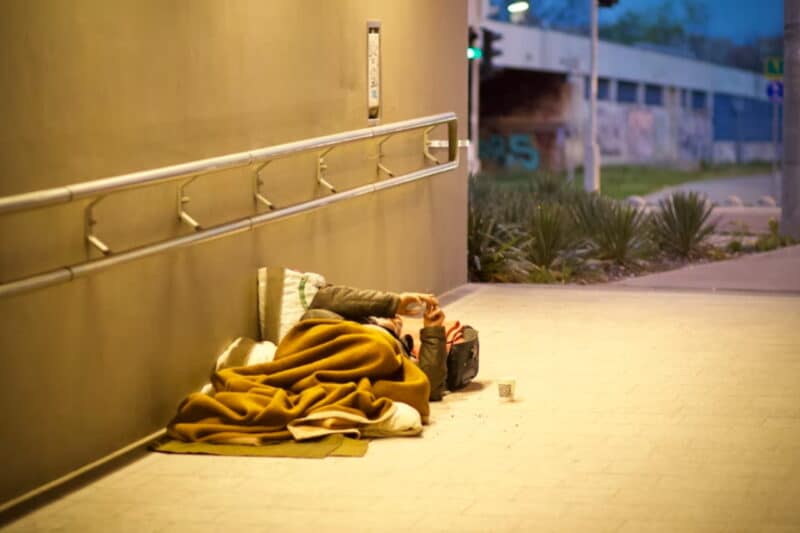When it comes to discussing relative poverty vs absolute poverty, many people think they are one and the same. However, there is a big distinction between the two terms.
Relative poverty is defined as when a person does not have enough income to meet their society’s average standard of living. Absolute poverty, on the other hand, is when a person does not have enough income to meet their basic needs for survival.
Now, let’s see what distinguishes the two.
Poverty Comes in Many Forms
Poverty is a state or condition in which one lacks the necessities of life. These necessities include food, clothing, shelter, and safe drinking water. Poverty can also refer to a lack of access to education, healthcare, and other basic services.
There are many types of poverty, such as:
- Absolute poverty
- Relative poverty
- Situational poverty (caused by a particular set of circumstances, such as job loss, illness, or divorce)
- Generational poverty (a family that has been in poverty for two generations or more)
- Urban poverty (economic and social challenges that exist in industrialized areas)
- Rural poverty (poverty in non-metropolitan areas)
While poverty can have many causes, some of the most common include:
- Inequality
- Wars
- Lack of access to drinking water
- Poor healthcare systems
- Climate changes
- Lack of education
- Unemployment
Now, let’s take a closer look at the principal absolute poverty vs relative poverty differences.
Ultimate Showdown
To get a clearer picture, let’s look at a table that compares the two poverty types side by side:
| Relative poverty | Absolute poverty |
| Unable to reach the minimum average living standard | Deprived of the basic needs |
| Measured using the Gini coefficient | Measured using poverty lines |
| Changes with time | Stays consistent |
| Found in developed countries | Found in developing countries |
| Can be eradicated | Can’t be eradicated |
Now, let’s get into more detail.
Relative Poverty Definition
Relative poverty is a state in which an individual or a household fails to meet the minimum average standard of living. The relative poverty threshold in most developed countries is set at 60% of the median household income.
In other words, if you make less than 60% of the typical income in your nation, you will be deemed to be living in relative poverty.
Here’s a relative poverty example:
In the United States, the average yearly income is $50,000. 60% of 50,000 equals 30,000 dollars. That means anybody who makes less than $30,000 per year would fall into the relative poverty category.
For instance, someone who can afford the essentials like food and housing but doesn’t have enough money to attain other goods that would make their life more convenient, such as internet access or having a chance to go to college, is considered to be living in relative poverty.
How Relative Poverty Is Caused
Many factors can cause relative poverty, such as:
- Wage disparity
- Lack of education
- Poor infrastructure
- High renting costs
- Family socioeconomic status
- Globalization
How to Measure Relative Poverty
Another relative vs absolute poverty difference is the way they are measured. Relative poverty is measured using the Gini coefficient.
The Gini coefficient is calculated by taking the difference between the cumulative percentages of the population and the cumulative percentages of income.
Numbers between 0 and 100 are used for measurements, with 0 indicating perfect equality and 100 indicating perfect inequality.
Countries with the highest Gini coefficients are South Africa (63.0), Namibia (59.1), Suriname (57.9), and Zambia (57.1).
On the other hand, the Gini coefficient of the United States is 48.5. New York (51.02), Louisiana (49.03), California (48.80), Connecticut (49.47), and Florida (48.52) are the states with the highest income inequality.
Absolute Poverty Definition
Absolute poverty can be defined as a condition in which an individual (or a family) is unable to obtain the essentials, such as food, clothing, shelter, and safe drinking water. The World Bank classifies absolute poverty as living on less than $1.90 daily.
Absolute poverty is determined by local economic conditions and is not compared to the incomes of other people or families. It can also vary from country to country.
Let’s take a look at an absolute poverty example:
In 2019, in South Sudan, only 50% of people had access to drinking water, while a mere 10% had access to basic sanitation.
Moreover, in 2021, 9% of the global population (698 million people) lived with less than $1.90 a day.
On that note, South Sudan has the highest poverty rate in the world (82.30%), followed by Equatorial Guinea (76.80%), Madagascar (70.70%), Guinea-Bissau (69.30%), and Eritrea (69.00%).
Causes and Measures
The leading causes of absolute poverty are wars, lack of resources, lack of employment, lack of education, and climate change.
As we mentioned, absolute and relative poverty differ in how they are measured. Unlike relative poverty, that’s measured using the Gini coefficient, absolute poverty is measured using poverty lines.
A poverty line is the minimum amount of money that a person needs to live. The current global poverty threshold amounts to $1.90 per day. Starting fall 2022, the new global line will amount to $2.15.
Conclusion
To sum up, the main difference between relative and absolute poverty is that the former is a condition in which an individual or a family cannot obtain the basic necessities of life, while the latter fails to meet the minimum average standard of living.
Moreover, absolute poverty is more prevalent in developing countries. It is consistent and can’t be eradicated. On the other hand, relative poverty is more often found in developed countries. It can vary, and there is a possibility of that poverty being eliminated.
FAQs
Is absolute poverty lower than relative poverty?
You can’t compare the two in these terms as they have different measuring systems. I.e., absolute poverty is measured by a poverty line that currently amounts to $1.90 per day.
Relative poverty is measured by a Gini coefficient, starting from 0 (perfect equality) and ending at 100 (perfect inequality). The threshold for relative poverty sets at 60% of the median income in your country.
Furthermore, relative poverty is a part of absolute poverty. In other words, if you can’t afford the basic necessities of life, you are also unable to reach the minimum average living standard.
What is an example of absolute poverty and relative poverty?
A homeless person living on the streets would be an example of absolute poverty. This person would not have access to basic necessities like food, clothing, and shelter. Another example would be a family in a Third World country that does not have access to clean water.
An example of relative poverty is an unemployed person who needs government financial assistance to sustain themselves. Another example is a family that makes less than 60% of the median income in their country.
What is the difference between absolute and relative poverty?
First, people who live in absolute poverty are deprived of basic needs (such as food, shelter, and water). In contrast, people living in relative poverty cannot reach the minimum average living standard.
Secondly, absolute poverty is more prevalent in developing countries, while relative poverty can be found in developing and developed countries. However, it’s more common in developed countries.
The last relative poverty vs absolute poverty distinction can be seen in the fact that absolute poverty cannot be eradicated, while relative poverty can.






